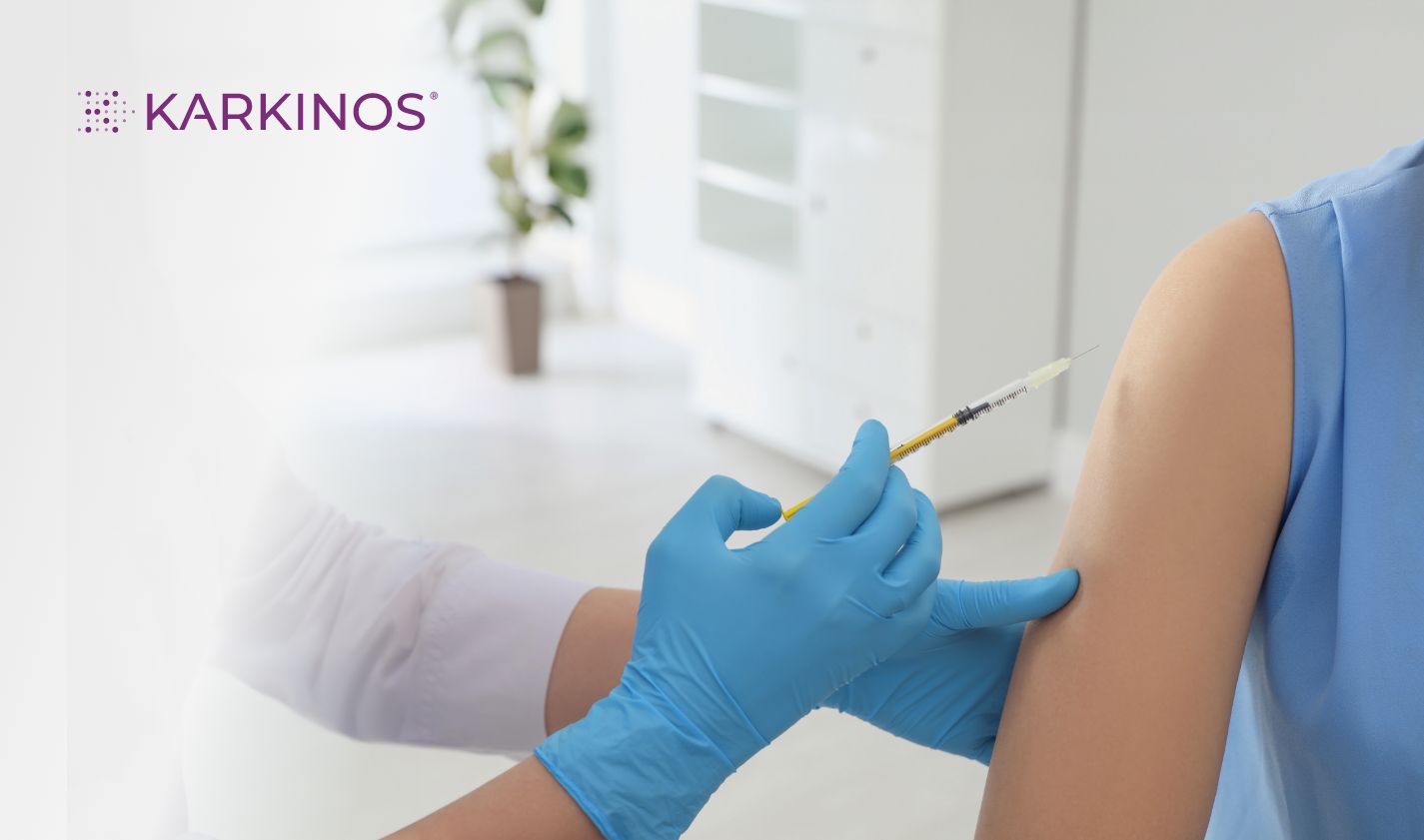Cervical cancer vaccination: Why is it absolutely necessary for young boys and girls?
By Dr. R. Sankaranarayanan, Director – Preventive Oncology, Karkinos Healthcare
Cancer, which is usually named after the organ where it initially starts and occurs, is usually a lethal disease in which cells in the organ grow out of control. Eventually it spreads to other body parts such as nearby tissues through direct extension, and eventually to distant organs such as liver, lungs, brain, bones and lymph nodes through blood and lymphatic fluid. Lymphatic fluid, is a collection of the extra fluid that drains from cells and tissues in the body and not reabsorbed back into blood vessels.
In India, the most common cancer among women is breast cancer followed by cancer of the uterine cervix, hereafter referred to as cervical cancer. Uterine cervix is the part of the uterus consisting of its neck and the opening to the vagina. It is estimated that 180,000 new cases of breast and 124,000 new cases of cervical cancer occur in India annually.
Of course, more than three fourths of these cancers occur in advanced stages in which treatment is aggressive, expensive and less effective and cure rates (often described as 5- year survival, i.e., surviving for 5-years from diagnosis without recurrence of cancer) are less than 30%. Of the above two cancers cervical cancer is readily preventable whereas breast cancer can be detected in very early stages (in stage I) by repeated clinical screening and by special imaging investigations such as mammography and ultrasound. Here, we will discuss how cervical cancer can be prevented by vaccination.
HPV 16 and HPV 18 – the common virus threats to the cervix
Everyone will agree that disease prevention is always better than cure. However, to prevent a disease we should know how the disease is caused in the first place. Fortunately, we know what causes cervical cancer. It is caused by persistent infection with one of the 14 types of human papillomaviruses (HPV). These viruses are called HPV 16, 18, 31, 33, 35, 39, 45, 51, 52, 56, 58, 59, 66 and 68. Of these, persistent HPV 16 infection is responsible for causing 70-75% of cervical cancers and persistent HPV 18 infection for 10-15% of cervical cancers in India. The remaining 12 types cause around 10-15% of cervical cancers in India.
The above HPV types can also cause cancers in other organ sites such as vagina and vulva in women, penis in men; anus, and certain head and neck cancers in the back of the throat, base of the tongue and tonsils in both men and women. In general, HPV is thought to be responsible for almost all cervical cancers, more than 90% of anal cancers, about 70% of vaginal and vulvar cancers, and 60% of penile cancers.
HPV infection, in simple terms, is the infection of the skin and reproductive tract. It is the most common infection of the covering layer of the genital tract. It can also affect skin and throat. It is a ubiquitous infection in the sense that almost all sexually active people will be infected at some point in their lives, usually without any symptoms. Most HPV infections are transient and usually go away on their own in more than 90% of infected people, without treatment and it persists only in around 10% of the women.
The highest frequency of transient infection is observed within 3-4 years after sexual debut. The immune system usually clears HPV from the body within a year or two with no lasting effects. When the body’s immune system cannot get rid of a HPV infection, it can linger over time and turn normal cells into abnormal precancerous cells and then cancer if left untreated. About 10% of women with HPV infection on their cervix will develop long-lasting HPV infections that put them at risk for cervical cancer.
It usually takes 10–20 years for cervical cancer to develop after HPV infection. So if one can prevent cancer causing HPV infection in the first place and cervical precancerous changes in the cervical cells, eventually, cervical cancer can be prevented.
Preventive vaccines for cervical cancer
Since we know that cervical cancer is caused by HPV infection, vaccines have been developed to prevent major cancer causing HPVs such as HPV 16 and 18 in addition to others.
The currently available HPV vaccines in India such as Cervarix targets to prevent HPV 16 and 18, Gardasil 4 and CervaVac target to prevent HPV 6, 11, which cause warts and HPV 16 and 18 infections, which cause cervical cancer. The other currently available HPV vaccine in India, Gardasil9 targets HPV 6, 11, 16, 18, 31, 33, 45, 52, 58. Each of these vaccines were found to be safe and effective in clinical trials. Cervavac is an Indian vaccine and has been found to be equally effective compared to that of Gradasil4.
The above vaccines can prevent a vast majority of cervical cancer provided one of the HPV vaccines can be given either as a single dose or two doses at 6 months apart by intramuscular injection in the upper arm to girls aged 9-20 years, before they become sexually active.
To be precise, Cervavac, Gardasil4, and Cervarix can prevent 80-85% of cervical cancers whereas Gardasil 9 can prevent 90-95% of cervical cancers in India, provided the recipients are HPV naïve. Women, through ages 21 to 26 years, may get two doses of HPV vaccine at an interval of 6 months if they are not vaccinated already.
However, the vaccine efficacy may be lower in these women when compared to those who receive between 9 and 14 years-of-age. HPV vaccination is most effective when given before a person is exposed to the virus.
HIV infected persons should receive three doses of HPV vaccine at days 1, 30 or 60 and 180 as they are at high risk for HPV infection.
HPV vaccination is not routinely recommended for women older than age 26 years. Some unvaccinated women between the ages 27 through 45 years might choose to get HPV vaccine after speaking with their doctor about their risk for new HPV infections and possible benefits of vaccination in them.

The HPV vaccine, while commonly associated with preventing cervical cancer in women, actually protects against several types of cancers in both men and women, including some that don’t affect the cervix. Therefore, boys also need to take the HPV vaccine. As the HPV vaccine protects against the most common cancer-causing strains of HPV, it includes the strains that cause cervical cancer in women, as well as other cancers in both men and women, such as:
Hence, vaccinating boys against HPV is just not about protecting women from cervical cancer, it is also about protecting boys from their own risk of developing HPV-related cancers. |
HPV vaccination of adults provides less benefit, because more people in this age range have been exposed to HPV already and they are candidates for cervical screening to prevent cancer.
Several years of careful follow-up of vaccinated girls/women have shown that HPV vaccination is a safe vaccine. Common side effects of HPV vaccination are mild and get better within a day or two. These include:
- Pain, redness, or swelling in the arm where vaccine was given
- Fever
- Dizziness or fainting
- Nausea
- Headache or feeling tired
- Muscle or joint pain
To prevent fainting and injuries from fainting, vaccine recipients should be seated or lying down during vaccination and observed for 15 minutes after the injection.
HPV vaccination does not cause any fertility problems and is safe during lactation. HPV vaccination is not recommended during pregnancy. However, no need for any worry if it was inadvertently given during pregnancy. The remaining vaccine course may be completed after completing pregnancy.
Screening for cervical cancer
Another important cervical cancer prevention strategy is screening. HPV vaccination and screening at appropriate ages can eliminate cervical cancer. HPV testing to test for HPV infection or other screening tests such as Pap smear may be used to screen women for cervical cancer.
Women must be screened every 5–10 years starting at the age of 30 if HPV testing is used as a method to screen. Pap smear screening tests should be repeated every 3-5 years. Women living with HIV should be screened every 3 years starting at the age of 25.
HPV testing is a more accurate screening test than Pap smear. After a positive HPV test or Pap smear, a doctor can look for precancerous changes on the cervix that could develop into cervical cancer if left untreated. Treatment of precancerous lesions prevent cervical cancer. Precancers rarely cause symptoms, which is why regular screening is important.
The protection provided by HPV vaccines lasts a long time. People who received HPV vaccines were followed for about 15 years, and their protection against HPV infection has remained high with no evidence of decline over time and blood levels of antibodies remain high.
Countries which introduced HPV vaccination in their immunisation schedule, HPV infections and cervical precancers were found to have significantly dropped on administering the vaccine.
Thus, HPV vaccination has emerged as one of the most promising and effective yet safe cancer prevention methods in recent years. Given the availability of HPV vaccination, screening and effective treatments for cervical precancerous lesions, the World Health Organization’s (WHO) call for elimination of cervix cancer from the globe by covering large populations using these interventions is timely and needs to be acted upon.

 Dr. Rengaswamy Sankaranarayanan was the former Chief of the Cancer Screening Group, Early Detection & Prevention Section and Special Advisor on Cancer Control at the International Agency for Research on Cancer in Lyon, France. He has a MD degree in Radiation oncology followed by post doctoral training in Pittsburgh and Cambridge.
Dr. Rengaswamy Sankaranarayanan was the former Chief of the Cancer Screening Group, Early Detection & Prevention Section and Special Advisor on Cancer Control at the International Agency for Research on Cancer in Lyon, France. He has a MD degree in Radiation oncology followed by post doctoral training in Pittsburgh and Cambridge.